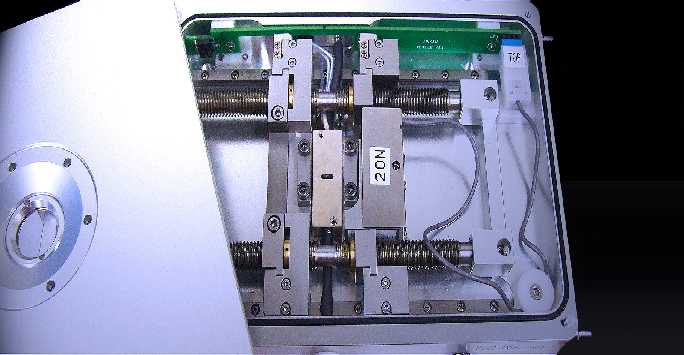
Inflation rig
Costume built inflation test rig for obtaining biomechanics of intact eye globes.

Intraocular pressure monitoring contact lens
The novel contact lens device is able to continuously measure fluid pressure in the eye.
.jpg)
Thickness measurement device (TMD)
Built in-house device capable of measuring thickness of the eye at various locations.

Dual column universal testing system
For application of uniaxial loading on materials to obtain quick insights their behavior.

Slit lamp
a lamp which emits a narrow but intense beam of light, used for examining the interior of the eye.

Pulsair intellipuff
A small, space-saving footprint combined with the elegant, pump, solenoid control valves, a plenum chamber, and an optical mainframe allow efficient and fast pressure measurement.

Corvis Tonometer
Records the reaction of the cornea to a defined air pulse with a newly developed high-speed Scheimpflug-camera that takes over 4 300 images per second. IOP and corneal thickness can be measured with great precision on the basis of the Scheimpflug images.

Pulsair desktop
The Keeler Pulsair Desktop uses advanced optical and sensor technology for positional detection and puff control.

Goldmann Applanation Tonometer
Tonometer is an instrument that is based on Imbert-Fick law. It is considered to be the gold standard instrument for measurement of Intraocular pressure.





